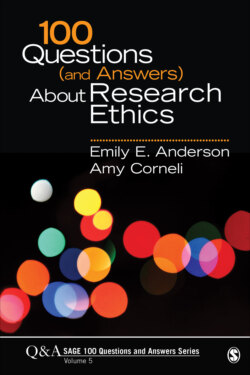Читать книгу 100 Questions (and Answers) About Research Ethics - Emily E. Anderson - Страница 24
Question #13 What Is Meant by “Minimal Risk”?
ОглавлениеAccording to the federal research regulations, minimal risk “means that the probability and magnitude of harm or discomfort anticipated in the research are not greater in and of themselves than those ordinarily encountered in daily life or during the performance of routine physical or psychological examinations or tests” (45 C.F.R. § 46.102(j)). Research studies are evaluated according to whether they pose more risk than what people face when going about their normal activities. Most social and behavioral sciences research meets the definition of minimal risk. However, determining the ordinary risks of daily living is tricky. Such risks can vary depending on where people live, their health status, their jobs, and the kinds of activities in which they regularly engage.
Every research study can be considered to pose either “no more than minimal risk” or “greater than minimal risk.” As described in more detail in Part 8: Negotiating the IRB Review Process, the type of institutional review board (IRB) review (exempt, expedited, or full board) that a research study must undergo is determined by whether the research study is deemed by the IRB to pose no more than minimal risk or greater than minimal risk. A comprehensive IRB application should clearly outline risks and provide information to help the IRB make the appropriate determination.
Researchers and IRBs may not always be consistent in their interpretation and application of the concept of minimal risk, due to the broad regulatory definition. For example, whose daily life should be considered—a person who represents the majority of people in a community, or a person who represents people who will likely participate in the research? Either standard may be applied by an IRB.
More questions? See #16, #77, and #79.
